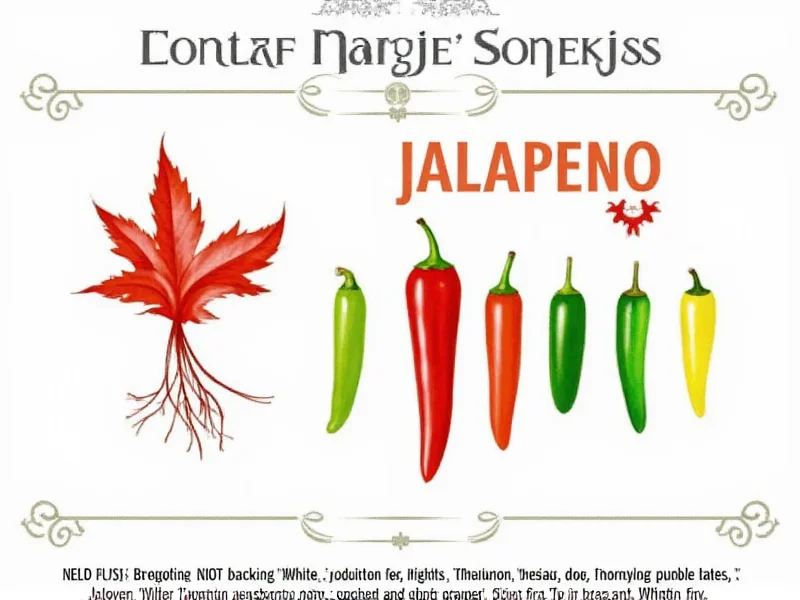The Scoville scale remains the standard measurement for chili pepper heat worldwide. Developed by pharmacist Wilbur Scoville in 1912, this scale quantifies the concentration of capsaicinoids—the compounds responsible for the burning sensation we perceive as “heat.” Originally determined through human taste testing, modern measurements use high-performance liquid chromatography (HPLC) for precise capsaicin quantification, then convert these measurements to Scoville Heat Units.
Understanding Scoville Heat Measurements
One Scoville Heat Unit represents the amount of capsaicin present in a pepper. The higher the SHU rating, the more capsaicin concentration and therefore greater heat intensity. The Scoville Organoleptic Test originally worked by diluting pepper extract in sugar water until the heat became undetectable to a panel of tasters. A rating of 5,000 SHU meant the extract required 5,000 times dilution before the heat disappeared.
Today's scientific methods provide more accurate measurements without human subjectivity. HPLC separates and measures the specific capsaicinoids, then calculates the Scoville equivalent using a standardized formula. This modern approach explains why you might see slight variations in reported SHU values across different sources studying jalapeños.
Jalapeño Heat Variability Factors
Several elements influence where a specific jalapeño falls within the 2,500-8,000 SHU range:
- Stress conditions: Peppers grown in less-than-ideal conditions (drought, temperature extremes) often develop higher capsaicin levels as a defense mechanism
- Ripeness: Red jalapeños (fully ripe) typically measure hotter than green ones
- Seeds and membranes: The white pith and seeds contain most capsaicin—removing them significantly reduces heat
- Cultivar differences: Some jalapeño varieties like 'Early Jalapeño' or 'Jalapeño M' have different heat profiles
| Pepper Variety | Scoville Heat Units | Heat Level Comparison |
|---|---|---|
| Bell Pepper | 0 SHU | No heat |
| Jalapeño | 2,500-8,000 SHU | Mild to medium |
| Serrano | 10,000-23,000 SHU | 2-3x hotter than jalapeño |
| Habanero | 100,000-350,000 SHU | 15-40x hotter than jalapeño |
| Carolina Reaper | 1,400,000-2,200,000 SHU | 200-300x hotter than jalapeño |
Practical Implications for Cooks
Understanding the jalapeño Scoville scale range helps cooks manage heat levels effectively. When working with fresh jalapeños, consider these practical tips:
- Wear gloves when handling peppers to prevent capsaicin transfer to sensitive areas
- Remove seeds and white membranes for milder flavor while retaining jalapeño essence
- Soak sliced peppers in vinegar or salt water to reduce heat intensity
- Pair with dairy products like sour cream or cheese to counteract capsaicin's effects
- Remember that cooking concentrates heat—add jalapeños toward the end of preparation for less intense spice
The moderate heat level of jalapeños makes them ideal for introducing chili flavor without overwhelming spice. Unlike extremely hot peppers that dominate a dish, jalapeños contribute both heat and distinctive grassy, vegetal notes that complement many cuisines. This balance explains their popularity in salsas, nachos, poppers, and as a versatile ingredient across Mexican and Southwestern cooking.
Measuring Your Own Jalapeños
While professional Scoville testing requires laboratory equipment, home cooks can conduct informal heat comparisons:
- Prepare identical dishes with different jalapeños
- Have multiple tasters evaluate heat levels on a 1-10 scale
- Compare results to establish relative heat rankings
- Use this information to select peppers for future cooking
This approach won't provide exact SHU measurements but helps identify particularly hot or mild jalapeños from your garden or grocery store. Many experienced growers note that smaller, more wrinkled jalapeños often pack more heat than smooth, plump specimens.
Common Questions About Jalapeño Heat
Why do some jalapeños taste hotter than others?
Jalapeño heat varies due to growing conditions, ripeness, and genetics. Stress factors like drought or temperature extremes increase capsaicin production. Red jalapeños (fully ripe) typically measure hotter than green ones, and the seeds and white membranes contain most of the heat-producing compounds.
How does the jalapeño Scoville rating compare to other common peppers?
Jalapeños (2,500-8,000 SHU) are significantly milder than habaneros (100,000-350,000 SHU) but hotter than poblanos (1,000-2,000 SHU). They're about 2-3 times milder than serranos (10,000-23,000 SHU) and approximately 15-40 times milder than habaneros. Bell peppers register at 0 SHU with no detectable heat.
Can I reduce the heat of jalapeños while cooking?
Yes, several methods reduce jalapeño heat: remove seeds and white membranes (where most capsaicin concentrates), soak sliced peppers in salt water or vinegar, add dairy products like cheese or sour cream to dishes, or cook them longer to break down capsaicin compounds. Adding sweetness through fruits or sugars also counteracts perceived heat.
Are red jalapeños hotter than green ones?
Generally yes. Red jalapeños are fully ripe versions of green jalapeños and typically measure at the higher end of the 2,500-8,000 SHU range. The ripening process increases capsaicin concentration while developing sweeter flavor notes. However, individual pepper characteristics and growing conditions can sometimes override this general pattern.
What's the best way to handle jalapeños safely?
Always wear gloves when handling jalapeños, especially when cutting or seeding them. Avoid touching your face, particularly eyes, during preparation. Wash hands thoroughly with soap afterward. If you experience burning, use dairy products like milk or yogurt rather than water, which spreads capsaicin. Work in a well-ventilated area as capsaicin vapors can irritate respiratory passages.











 浙公网安备
33010002000092号
浙公网安备
33010002000092号 浙B2-20120091-4
浙B2-20120091-4